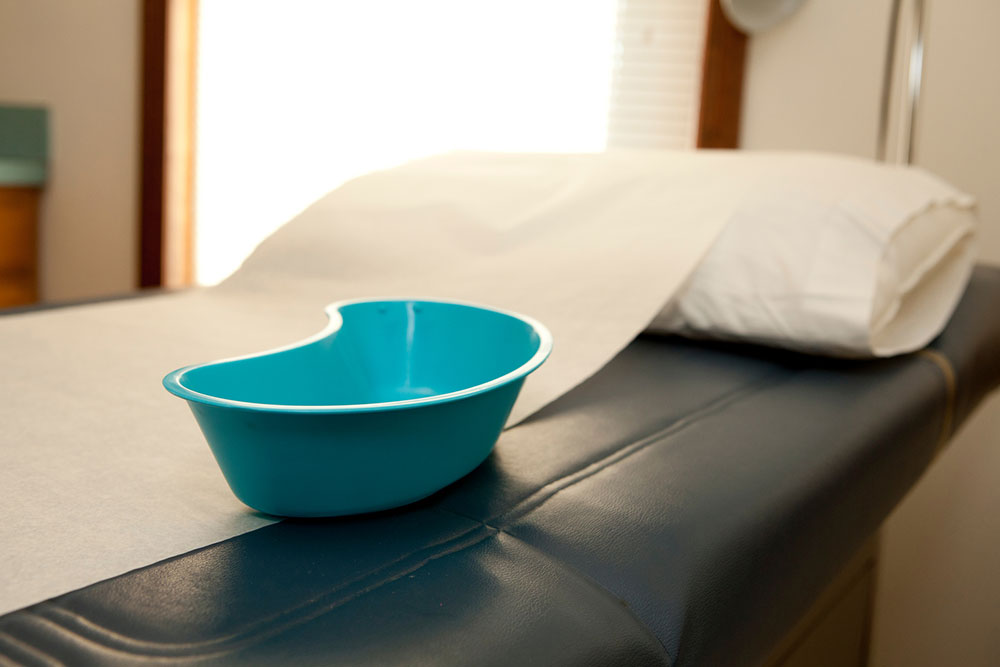
A comprehensive guide to bedpans
As individuals age, health concerns become more serious, and recovery periods become longer. Furthermore, mobility becomes a challenge for those in poor health or those who underwent major surgeries. Older adults with a disability that prevents them from getting out of bed might require help for using restrooms. Bedpans are containers that help such individuals urinate while lying in bed. Keep reading to learn more about the types of bedpans and how to use them.
Bedpan
A bedpan is a container placed beneath a sick person’s bed to collect urine and excrement. Bedpans are required when a patient is confined to bed due to various ailments, such as dementia, Parkinson’s disease, and Alzheimer’s disease. Compared to using a bedside toilet, some patients may find using bedpans a less convenient option due to the restricted mobility associated with being in bed for long periods.
Types of Bedpans
- Standard bedpan– This is the most basic kind of bedpan, meant for individuals with restricted movement or for those who are bedridden. Standard bedpans are simple to clean and are made using plastic or metal.
- Fracture bedpan– As the name indicates, a fracture bedpan is intended for individuals, including seniors, with injuries or fractures that make it challenging to sit up. Compared to traditional bedpans, these products have a flat base form that makes using them while lying down more comfortable for patients.
- Pontoon bedpan– As the name suggests, pontoon bedpans are designed using two flat and supportive areas on two sides. These flat bases offer extra stability when the bedpan is placed beneath a patient. Such bedpans are intended for people with mobility issues, and they prevent spills.
- Disposable bedpan– There are also disposable bedpans available manufactured from recycled (pulp) paper material. Rather than personal use at home, these pans are better suited for nursing homes and hospitals. It is necessary to use a specific bedpan support holder in conjunction with disposable bedpans. Additionally, a macerator—a specialized piece of handling and disposal equipment—is required for pulp paper bedpans.
- Commode pans– Commode pans are inexpensive, easy-to-use devices that provide a hygienic, one-time fix for incontinence. They may be disposed of in a macerator and pose no environmental risk. Certain toilet designs, like the cutaway commode, are compatible with different types of commode bedpans. However, it is recommended that the same be confirmed with the manufacturers of both the commode chair and bedpan.
Using a bedpan
- Start by assembling the materials first. A bedpan, gloves, and wet wipes or toilet paper are required. It also helps to have a pad to protect the bed. Ensure there is a place to put the bedpan down while assisting with cleaning or putting on clothes.
- Wear gloves after thoroughly washing and drying one’s hands. To catch spills, try to keep a bed mat underneath the bedpan.
- Assist the individual needing care if necessary, and have them remove their underwear and pants. For privacy, caregivers can cover them with a sheet or blanket.
- Slide the bedpan beneath the patient after getting them to sit up or gently elevate their hips.
- Give the individual privacy by leaving the room if one can do so safely.
- After they’re done, help the person move off the bedpan and make sure to keep the bedpan steady. Carefully put the bedpan aside. Then, throw away its contents in the toilet.
- If needed, help the individual with wiping. Use a disinfectant that has been diluted with water to rinse and cleanse the bedpan. Using a little sprayer that connects to the toilet water source might be helpful. Either air dry or dry the bedpan. Remove the gloves and discard them.
Pros
- Bedpans can let patients urinate near their beds instead of hurrying to the bathroom in an emergency.
- They also help in maintaining patients’ hygiene and well-being,
- They are cost-effective.
- A bedpan ought to be easy to clean and empty. Some varieties are even resistant to the high autoclave temperatures, making them hygienic to reuse. Additionally, it’s a good idea to keep several bedpans on available for rotation. Certain bedpans are designed to nest together, making storage easier.
Cons
- Many bedpans can be too tiny or shallow for some patients, and some may find it difficult to use certain bedpans because of their height. To avoid this, choose the right type of bedpan that caters to the patient’s needs.
- Typically, a person using a bedpan cannot lie in a posture that facilitates urinating or defecating. A health expert can guide in choosing the most comfortable position for the patient.
- Many people find it challenging to use a bedpan because of privacy concerns. Therefore, it is necessary to address these concerns through proper communication.
- It might be challenging to clean up after using a bedpan. However, proper cleaning tools and products can simplify the process to a great extent.
- Previous Post
- Next Post